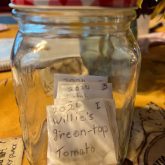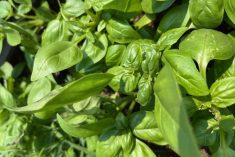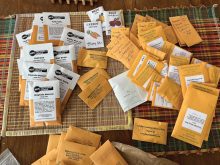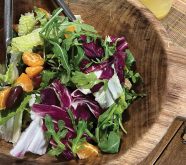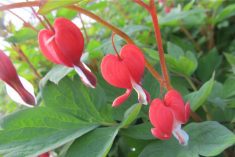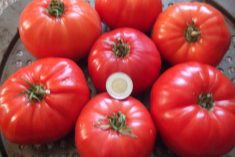Howdy, good people and how-do y’all. Welcome again to Grainews country.
For some gardeners and farmers, the harvest season is done. For others, there’s very little or no harvest left to be done. How have things been where you are? Let me know, should you care to share.
I often sing about weather and climate change in my Canadian Weather Song. In my area of south-central Manitoba, vivid memories still linger from travelling this summer along endless kilometres and viewing spectacular farm fields ablaze with golden yellow canola.
Read Also

Gentle treatments for pain in the neck
Heading toward year-end, people unknowingly tense up against the cold and busyness, causing neck pain that can often be treated with appropriate support and gentle mobility, athletic therapist Kathlyn Hossack says.
I remember a time a dozen years ago when a section of the dike on the Whoop and Holler Bend along Highway 331 near Portage la Prairie, Man., was cut to avoid anticipated flooding of the Assiniboine River. As a photo with this column shows, it was later filled in and restored.
Cordials
What’s the difference between a cordial person and a sip of cordial? Someone who is warm and sincere with a giving heart is said to be cordial. A cordial is also a sipping tonic, although you don’t often hear of it these days.
Across the world generations ago, cordials were made with a variety of unfermented natural ingredients, such as pure grape juice, cherry juice or herbal teas.
Cordials were taken in small doses for medicinal purposes, to warm and invigorate the body and boost immunity at the first sign of a cold, flu or sore throat. The idea was to go to bed right afterward and sweat out whatever was trying to invade the body.
Some cordials consisted of a few swallows of sherry or a half ounce of hospital brandy liqueur, with or without lemon juice and honey, mixed with warm water. It was often referred to as a hot toddy.
The name of the game with cordials like this is to maintain robust health during winter. Consuming large quantities of alcohol is toxic and addictive, so it’s important to ensure the right amount or avoid alcohol completely.
Manitoba Marathon
On June 18-23, Chris the Accordion Guy and yours truly, Ted the Singing Gardener, provided live entertainment at St. Vital Road and River Road in Winnipeg during the 45th running of the Manitoba Marathon.
The annual Father’s Day tradition returned to form this year with around 8,000 runners. It was quite a departure from June 19, 2022, when the 44th Manitoba Marathon was cut short and then officially cancelled by organizers shortly after it got underway due to extreme heat and other circumstances.
At this point let me say thanks to my cordial Grainews family of readers and welcome to all those tuning in for the first time.
It’s time to turn up the volume on my flow of words with a tip o’ the same Tilley hat that I’ve had for more than 30 years. Now that’s quality. Next is some good information about garden sage and ornamental sage.
Sage as medicine
Do you still have sage in your herb garden?
Common garden sage (Salvia officinalis) is the most common culinary variety, popular for poultry stuffing and flavouring other cooked meats. Well, here’s another suggestion. Save those sage leaves for a helpful flu and cold remedy.
Sage contains terpenoids, known as aromatic metabolites in plants. They help improve the adaptability of plants to the environment, and some specialized terpenoids have immense value to humans because of their applications in medicine, industry and agriculture.
Sage has been cited as an effective health remedy since at least the Black Death of the 14th century, and it has likely been used as folk medicine for much longer than that.
Steaming with sage is no more difficult than making a cup of tea. Brew some sage leaves in hot water in a sturdy pot with a lid and let it simmer for a few minutes, then remove from heat and let it cool a bit.
Carefully remove the lid from the pot and breathe in the benefits of the warm sage steam for 10 to 15 minutes. You can place a dry towel over your head to catch more vapours, if you wish.
Breathing in warm sage steam (not too hot now) is one of my tried and approved herbal remedies to prevent and/or treat the early onset of a cold, flu, head stuffiness, the chills or sore throat symptoms.
It can help break up mucous, making it easier for the body to clear respiratory passages. I find steaming with sage to be a simple and reliable technique for clearing congestion from the sinuses, ears and chest. It can also help those who suffer with spring and summer allergies.
There are other herbs you can combine with sage to make a steaming brew, including hyssop, chamomile and calendula. Each can also be used separately.
It’s best to try an herbal steam at the very first sign of congestion or irritation in your upper or lower respiratory system.
Purple sage
Another type of sage is purple sage (Salvia dorrii), also known as Dorr’s sage, fleshy sage, mint sage or tobacco sage. This is an attractive wild woody perennial shrub that many gardeners may not be familiar with.
This shrub reminds me a bit of Russian sage (Salvia yangii). It is easy to grow, and light watering in summer will help keep greyish leaves looking greener.
Purple sage is an aromatic plant found along dry, open coastal hillsides in coastal southern California and Baja, Mexico. It is tough and amazingly drought tolerant, and it is often used in xeriscaping to reduce soil erosion.
Purple sage grows 20 to 70 centimetres (eight to 28 inches) in height, with large floral spikes up to 10 cm (four inches) long.
Its flowers come in a variety of colours that include blue, purple, rose, pink and white. They are also highly scented and attract a variety of birds and insects.





